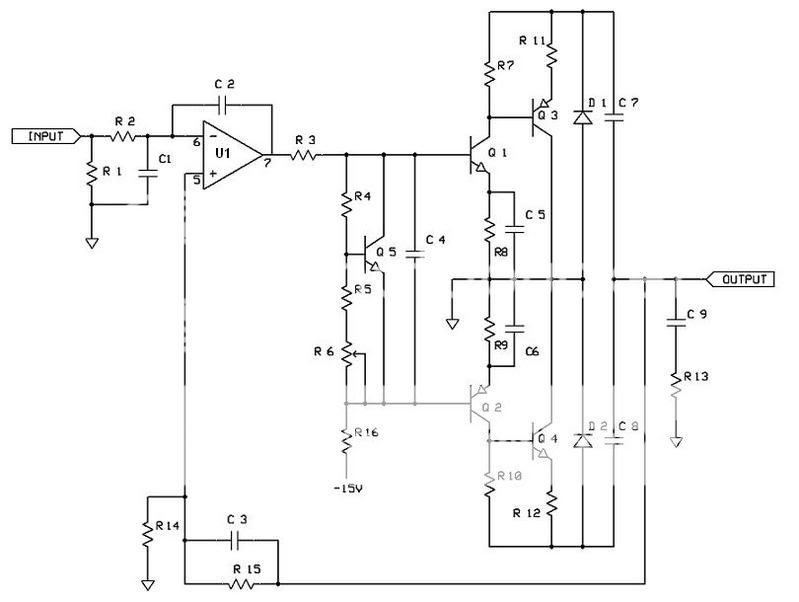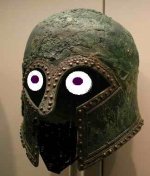Ahahaha..... Greeks have those needs... they are warriors by nature...ahahahaha
700 watts is not an amplifier...it is more a weapon!
You can "kill" your neighboor's ears with that thing.... and kill speaker.
Aahhaha.... very common that need when the guy is from Greece.
Nice place.... filled with warriors till the top.
Hey Xazopartalos!..... piece brother!!!
By the way.... this 700 watts... is this a stereo?... say 350 plus 350 watts?..... can this be 700 watts over 4 ohms speakers?
regards,
Carlos
700 watts is not an amplifier...it is more a weapon!
You can "kill" your neighboor's ears with that thing.... and kill speaker.
Aahhaha.... very common that need when the guy is from Greece.
Nice place.... filled with warriors till the top.
Hey Xazopartalos!..... piece brother!!!
By the way.... this 700 watts... is this a stereo?... say 350 plus 350 watts?..... can this be 700 watts over 4 ohms speakers?
regards,
Carlos
Attachments
Hi Carlos,
nothing like brute power to win a battle, but sometimes cunning plans are required also and the Athenians were good at that.
Xazopartalos, here is a design that will do more than 700 watts into a 4 ohm load. This link takes you to a build by a fellow DIYA constructor of one of my designs.
http://www.diyaudio.com/forums/showthread.php?postid=1303252#post1303252
Yiasas (from another Greek)
Quasi
nothing like brute power to win a battle, but sometimes cunning plans are required also and the Athenians were good at that.
Xazopartalos, here is a design that will do more than 700 watts into a 4 ohm load. This link takes you to a build by a fellow DIYA constructor of one of my designs.
http://www.diyaudio.com/forums/showthread.php?postid=1303252#post1303252
Yiasas (from another Greek)
Quasi
Hi Xazopartalos,
OK, so 700W/8Ohm.
Wow! That's 210Vp-p, meaning about +/-120V rails.
I'd rather build 350W/4Ohm amps with about +/-65V rails and would bridge them.
A much effective solution would be to DIY or buy speakers with better SPL. A 95dB rated spk with a 100W amp kills.
I'm sure your friend has some cheap ~85dB speakers - that's why he needs 300W for real loud music.
Best regards,
"The Honk-Honk quality grade"
OK, so 700W/8Ohm.
Wow! That's 210Vp-p, meaning about +/-120V rails.
I'd rather build 350W/4Ohm amps with about +/-65V rails and would bridge them.
A much effective solution would be to DIY or buy speakers with better SPL. A 95dB rated spk with a 100W amp kills.
I'm sure your friend has some cheap ~85dB speakers - that's why he needs 300W for real loud music.
Best regards,
"The Honk-Honk quality grade"
Re: Ahahaha..... Greeks have those needs... they are warriors by nature...ahahahaha
Nah, Just a space heater.
Anyway, this is a job for better speakers. Maybe horns.
100dB 1W/1M speaker @70 watt amp =
90dB 1W/1M speaker @700 watts amp
destroyer X said:
700 watts is not an amplifier...it is more a weapon!
regards,
Carlos
Nah, Just a space heater.
Anyway, this is a job for better speakers. Maybe horns.
100dB 1W/1M speaker @70 watt amp =
90dB 1W/1M speaker @700 watts amp
Is this a class H amplifier.
hi there,
this is no class h. it's just that the output section is cascode connected, so they will share half of the voltage rails.......
still this thing suffers the same anomally as AB designs since this still an AB design amp.......
HEAT!

If you can live with 1.5dB less than 700W, then try this on ±95V with eight sets of outputs.
If you really want that last 1.5dB then you will need to double up on the drivers and outputs (sixteen sets of outputs total), and ±125V. The opamp requires its own ±15V.

R1 1K
R2 22K
R3 47R
R4 1K
R5 470R
R6 500R
R7,R10 22R 1W
R8,R9 4R7 1/2W
R11,R12 0R22 3W
R13 15R 3W (X3)
R14 470R
R15 22K 1/2W
R16 4K7
C1 470pF
C2,C3 56pF
C4 4µF7
C5,C6 3nF3
C7,C8 20,000µF
C9 100nF
D1,D2 1N4004
Q1 MJE15032
Q2 MJE15033
Q3 MJ21193
Q4 MJ21194
Q5 MJE340
U1 1/2 LM833 (or similar)
If you really want that last 1.5dB then you will need to double up on the drivers and outputs (sixteen sets of outputs total), and ±125V. The opamp requires its own ±15V.

R1 1K
R2 22K
R3 47R
R4 1K
R5 470R
R6 500R
R7,R10 22R 1W
R8,R9 4R7 1/2W
R11,R12 0R22 3W
R13 15R 3W (X3)
R14 470R
R15 22K 1/2W
R16 4K7
C1 470pF
C2,C3 56pF
C4 4µF7
C5,C6 3nF3
C7,C8 20,000µF
C9 100nF
D1,D2 1N4004
Q1 MJE15032
Q2 MJE15033
Q3 MJ21193
Q4 MJ21194
Q5 MJE340
U1 1/2 LM833 (or similar)
"Are the opamp's inputs' polarities correct?"
Yes.
Notice that the speaker 'hot' lead is connected to the power supply center tap, and that all the output cases are at ground potential (no insulators required).
One power transformer per channel is required, the opamp power may be shared for as many channels or eq, filters, etc. as needed.
"is this all complete?"
Yes.
The diagram shows one pair of outputs. One pair is enough for 100W (the power supply voltage would be adjusted as required).
For example:
You need 400W/4R, so you need four sets of outputs, and ±75V or so.
Above ±100V the SOA gets poor so you need more than one pair per 100W. You can do 700W/4R with seven pair on ±95V, but I would want a whole bunch more for the same power at 8R and ±125V. Sixteen pair is more than needed and would allow for the load to dip below 8R (which most inefficient hi-fi-speakers do).
Replacing R16 with an active CCS will improve measured performance for meter reader types, but doesn't sound as good.
This amp sounds good with NE5532, LM833, etc, and does not sound good with LF353, TL072, etc. You may try a different opamp. It must be unity gain stable, but it should not be a super fast type (it only need swing a couple of volts to drive the amp to full output).
Yes.
Notice that the speaker 'hot' lead is connected to the power supply center tap, and that all the output cases are at ground potential (no insulators required).
One power transformer per channel is required, the opamp power may be shared for as many channels or eq, filters, etc. as needed.
"is this all complete?"
Yes.
The diagram shows one pair of outputs. One pair is enough for 100W (the power supply voltage would be adjusted as required).
For example:
You need 400W/4R, so you need four sets of outputs, and ±75V or so.
Above ±100V the SOA gets poor so you need more than one pair per 100W. You can do 700W/4R with seven pair on ±95V, but I would want a whole bunch more for the same power at 8R and ±125V. Sixteen pair is more than needed and would allow for the load to dip below 8R (which most inefficient hi-fi-speakers do).
Replacing R16 with an active CCS will improve measured performance for meter reader types, but doesn't sound as good.
This amp sounds good with NE5532, LM833, etc, and does not sound good with LF353, TL072, etc. You may try a different opamp. It must be unity gain stable, but it should not be a super fast type (it only need swing a couple of volts to drive the amp to full output).
djk said:"Are the opamp's inputs' polarities correct?"
Yes.
Notice that the speaker 'hot' lead is connected to the power supply center tap, and that all the output cases are at ground potential (no insulators required).
One power transformer per channel is required, the opamp power may be shared for as many channels or eq, filters, etc. as needed.
"is this all complete?"
Yes.
The diagram shows one pair of outputs. One pair is enough for 100W (the power supply voltage would be adjusted as required).
Hello
It's a very nice and simple schematic, very interesting, is it a PA amp or it can be use for good music listening ?
If it's sound better than a chip-amp or a bridged LM3886 I will try your amp.
I see the vbe multiplier, I presume that it's because you use an op amp that you do not use a VAS ?
Thank
Gaetan
hienrich said:
hi there,
this is no class h. it's just that the output section is cascode connected, so they will share half of the voltage rails.......
still this thing suffers the same anomally as AB designs since this still an AB design amp.......
HEAT!
The cascode is the same idea as the Leach superamp. With 20 outputs per channel, a full 105CFM 4.5" fan and two feet of heatsink per channel there's enough SOA to drive a pair of lab horns 6dB into clip on peaks all night. If the plug doesn't melt off the extension cord
It's failrly easily converted to class G (not H) by replacing the lower bias resistors for the slave banks with a zener and boot strapping the upper resistor to make a CCS. Then add the necessary commutation and steering diodes and the lower voltage supply. THAT's not a project for a first-timer, however.
- Status
- This old topic is closed. If you want to reopen this topic, contact a moderator using the "Report Post" button.
- Home
- Amplifiers
- Solid State
- ~700w ampifier

